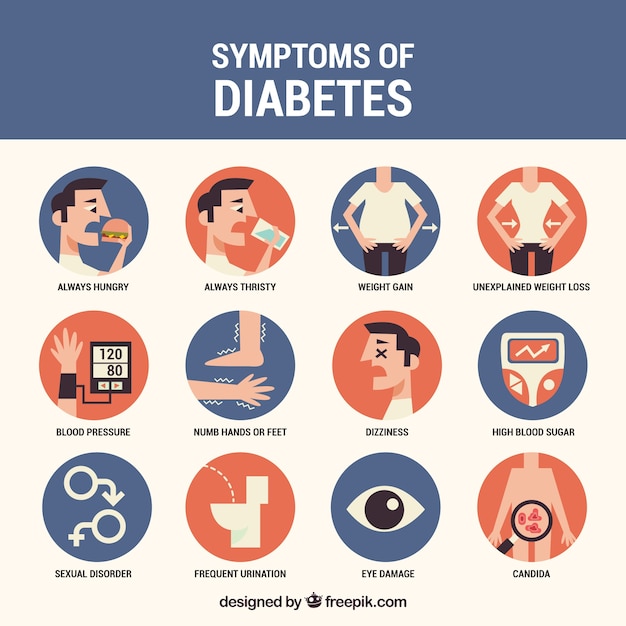Diabetes Mellitus is a well-studied condition, however, it is still often prone to misconceptions from the general population. It is a chronic metabolic disease that is related to blood sugar (glucose) and the ability of the body to produce hormones (insulin) to control the amount of glucose in the bloodstream. Generally, diabetes, and its complications, are due to elevated levels of blood sugar and is caused by either the inability to produce the necessary amount of Insulin, such as with Type 1 Diabetes, or the decreased response of the body to high levels of blood sugar due to chronic exposure, as with Type 2 Diabetes. Despite its relation to sugar, it does not simply imply that those who have a high intake of sweets or sugary products are the only ones affected. It is a multi-factorial condition that involves the interplay of nutrition, lifestyle, physical activity, genetics, family history, and other environmental factors. Worryingly, anyone may be prone to developing this condition and there are still steady increases in new cases annually.

Diabetes continues to affect millions of people every year. In 2015, it was found that an estimated 30.3 million people or 9.4% of the entire US population had diabetes. This included 132,000 children below the age of 18 with rates of prevalence continuing to increase with age. The highest spike in the prevalence of the disease was noted in adults aged 65 and above.
Despite advancements in health education, diagnosis, and management, the rates of newly diagnosed cases, as well as, the development of diabetic complications in already diagnosed cases is still on a steady rise. In the same study, it was found that an estimated 1.5 million new cases of diabetes were diagnosed 1. Also of concern was the fact that there were an estimated 84 million considered to be pre-diabetic who are at high risk for developing the disease along with its dreaded complications.

The symptoms of diabetes can be non-specific and easily overlooked. These include excessive thirst, frequent urination, frothy or bubbly urine, fatigue, slow-healing wounds, and recurrent or frequent infections. The diagnosis is confirmed upon consultation with a physician who will order blood glucose tests which will determine if one is diabetic or pre-diabetic. The chronic nature of the disease means that the delay of diagnosis and management of the condition will lead to an increased risk of developing several complications. The effects of diabetes are numerous, multi-systemic, and impose a significant long-term burden on patients. There is a significant association between diabetes and hypertension. It would generally require additional medications at an added cost. Diabetes is also known to be the leading cause of end-stage renal disease. This is even more problematic because if left untreated may lead to irreversible kidney damage that may require long-term dialysis treatment. Also dreaded is the development of distal neuropathy and poor wound-healing. Chronic diabetes can lead to a loss of sensation more notably on the lower limbs. This lack of sensation, especially to pain, could cause one to easily overlook the presence of cuts or wounds. If this is coupled with associated poor wound-healing and decreased immune response that eventually leads to the development of gangrene which is more often only manageable through amputation. As such, the early recognition, diagnosis, and management of this condition are crucial in slowing and preventing the onset of these adverse effects.
Fortunately, there have been several improvements in the management of Diabetes that have helped treat and improve the quality of life of patients. Endocrinologists, Internists, and Family Medicine physicians are now becoming more adept at handling this condition and selecting the appropriate plan that would best suit a patient’s needs and concerns. There are now several pharmacologic options available that can be selected to cater to the specific needs of individual patients. The development of drugs, such as Metformin, has drastically improved Diabetes management which helps control the disease and at the same time provides very minimal side effects. The use of Insulin has also been carefully studied and researched. Insulin has been the cornerstone of treatment of Type 1 Diabetes but often causes patients discomfort and inconvenience due to its strict scheduling, route of administration, and side effects. However, with the development of several different preparations of Insulin, a physician is now able to taper and adjust its dosage in a way that it can be more suited to a patient’s lifestyle but at the same time still be able to fully control a patient’s blood sugar levels. The approach to the management of diabetes has also now shifted to a more holistic approach rather than a purely pharmacologic one. It has now been recognized that proper nutrition and lifestyle modification is essential in the treatment of Diabetes. Several products have been designed to address the specific nutritional needs of Diabetic patients. These provide a convenient way for patients to ensure they are receiving a healthy amount of calories, but at the same time, decreasing unwanted amounts of carbohydrates.
As such, even though there is still an increase in rates of new-onset Diabetes, with the continuous improvements in the holistic management of patients, as well as, the wide availability of pharmacologic and nutritional options; patients are now better cared for and ensured to have a better quality of life.


